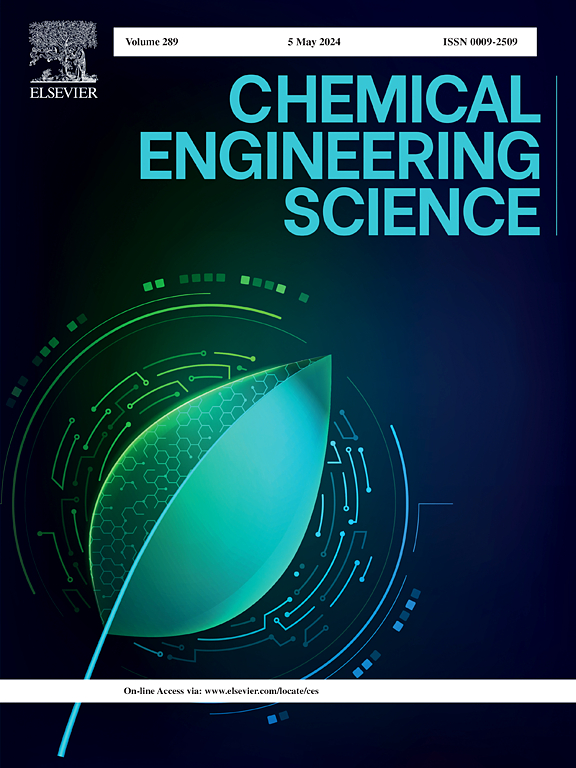Random Graph modeling of three-dimensional copolymerization of acrylates
IF 4.1
2区 工程技术
Q2 ENGINEERING, CHEMICAL
引用次数: 0
Abstract
The polymerization of multifunctional acrylates is commonly used to form three-dimensional networks. During network formation, reaction conditions change drastically due to increasing diffusion limitations and the liquid-to-solid phase transition, posing significant modeling challenges. We developed a two-level mathematical model for 3D radical copolymerization. The monomer-level model predicts the possible configurations in which individual monomer units are incorporated into the network. This connectivity information is then used to deduce polymer properties through a polymer-level model based on random graphs (RG).This model is applied to the terpolymerization of N-butyl acrylate (NBA), 1,6-hexanediol diacrylate (HDDA), and trimethylolpropane triacrylate (TMPTA), utilizing kinetic data from previous studies. Because it is necessary to track configurations of reactive groups and various types of bonds formed on the monomer units, as well as all possible ways such configurations may be formed, the monomer model itself has a significant combinatorial complexity. To address this, we employ an automated procedure known as Automated Reaction Network Generation (ARNG), inspired by computational linguistics.In addition to standard features predictable by RG models, such as polymer size distributions, gel points, and gel fractions, we extend the approach to include bivariate distributions to obtain size/mass and size/number of radicals distributions. This enhanced information provides deeper insights into the structural changes during acrylate network formation, particularly at low monomer conversions.

丙烯酸酯三维共聚的随机图建模
聚合的多功能丙烯酸酯通常用于形成三维网络。在网络形成过程中,由于扩散限制的增加和液相到固相的转变,反应条件发生了巨大变化,这给建模带来了重大挑战。我们建立了三维自由基共聚的两级数学模型。单体级模型预测单个单体单元被纳入网络的可能配置。然后,通过基于随机图(RG)的聚合物级模型,利用这些连通性信息推断聚合物的性质。该模型应用于n -丙烯酸丁酯(NBA)、1,6-己二醇二丙烯酸酯(HDDA)和三甲基丙烷三丙烯酸酯(TMPTA)的三元聚合,利用了先前研究的动力学数据。由于需要跟踪反应基团的构型和单体单元上形成的各种类型的键,以及这些构型形成的所有可能方式,因此单体模型本身具有显著的组合复杂性。为了解决这个问题,我们采用了一种受计算语言学启发的自动化过程,称为自动反应网络生成(ARNG)。除了RG模型可预测的标准特征(如聚合物尺寸分布、凝胶点和凝胶分数)外,我们还将该方法扩展到包括二元分布以获得尺寸/质量和尺寸/自由基数量分布。这种增强的信息可以更深入地了解丙烯酸酯网络形成过程中的结构变化,特别是在低单体转化过程中。
本文章由计算机程序翻译,如有差异,请以英文原文为准。
求助全文
约1分钟内获得全文
求助全文
来源期刊

Chemical Engineering Science
工程技术-工程:化工
CiteScore
7.50
自引率
8.50%
发文量
1025
审稿时长
50 days
期刊介绍:
Chemical engineering enables the transformation of natural resources and energy into useful products for society. It draws on and applies natural sciences, mathematics and economics, and has developed fundamental engineering science that underpins the discipline.
Chemical Engineering Science (CES) has been publishing papers on the fundamentals of chemical engineering since 1951. CES is the platform where the most significant advances in the discipline have ever since been published. Chemical Engineering Science has accompanied and sustained chemical engineering through its development into the vibrant and broad scientific discipline it is today.
 求助内容:
求助内容: 应助结果提醒方式:
应助结果提醒方式:


